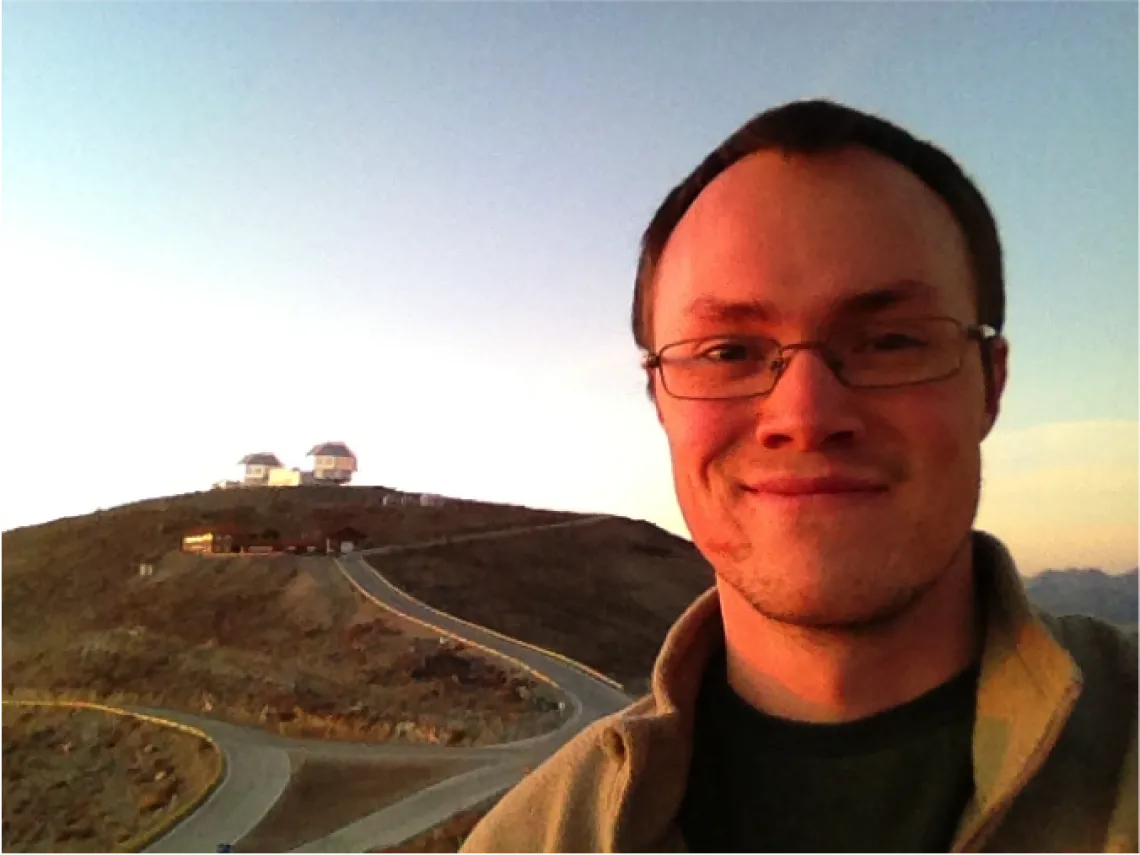Spotlight on Ben Rackham - NSF Fellow

Hi! My name is Ben Rackham. I’m a PhD student in the astronomy program at the University of Arizona. I started a National Science Foundation (NSF) Graduate Research Fellowship (GRF) in 2014.
I study the atmospheres of extrasolar planets that bridge the transition from small, rocky worlds to large, gas giants. We don’t have an example of one of these “super-Earths” or “mini-Neptunes” in the solar system, but recent surveys of extrasolar planets show these planets are very common, if not the most common type of planet. Investigating the atmospheres of these worlds can tell us about their bulk compositions and how they formed. Ultimately, understanding the division between terrestrial and gaseous planets will inform the search for life elsewhere in the universe, since super-Earths may be suitable hosts for life as we know it, while mini-Neptunes are not.
The primary challenge I encountered in applying for the NSF GRF was the mismatch between my undergraduate work and intended path in graduate school. I studied neuroscience as an undergraduate, only discovering my passion for astronomy and astrobiology after graduating. With the help of additional coursework, I managed to get accepted to the UA’s astronomy program (woohoo!!!), but I felt that my lack of previous research experience in astronomy would make any sort of competitive fellowship out of the question. One of the great things about the NSF GRF, however, is that it is an investment in you as a budding researcher more than in a particular project. In the application essays, I was honest about my motivations for switching fields for graduate school and how I thought I could put my background in biology to use as an astronomer interested in life elsewhere. I also stressed how I would utilize the expertise of members of my research team for support in carrying out this project.
My two biggest pieces of advice for interested applicants are: 1) be sure to equally address both evaluation criteria; and 2) definitely reapply while you are eligible. The NSF judges all applications with equal weight given to their intellectual merit and broader impacts. Descriptions of these criteria are available in the program solicitation and on the NSF’s website. In my case, I didn’t receive a fellowship when I applied as a first-year graduate student because I failed to properly address how my proposal would fulfill the broader impacts criterion. But with the help of the reviewers’ feedback and one-year’s-worth of work on this project under my belt, I successfully reapplied as a second-year graduate student. Typically, eligible students include those in their last year of college or first two years of graduate school. Be sure to check the program solicitation to see if you are eligible to apply, and keep reapplying while you can!
If you have any questions about applying for the NSF GRF, feel free to contact me by email!

